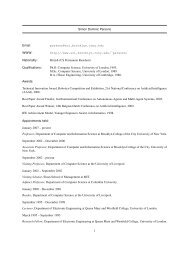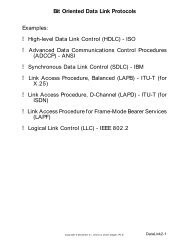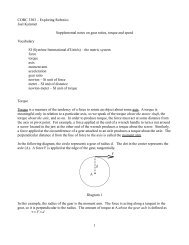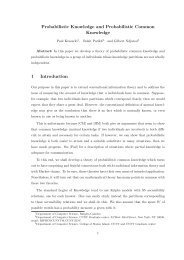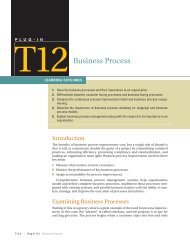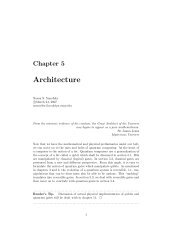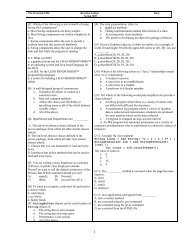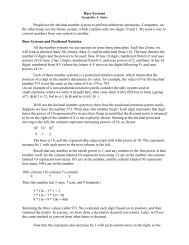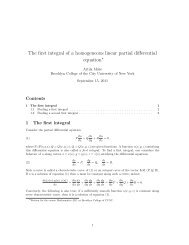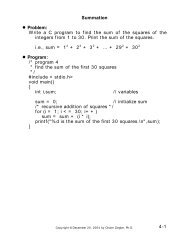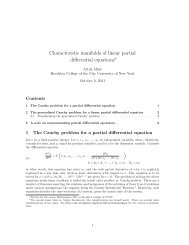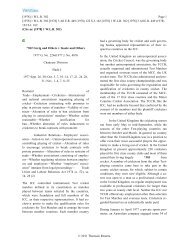Toward a Unified Theory of Human-Agent Modeling: A Position Paper
Toward a Unified Theory of Human-Agent Modeling: A Position Paper
Toward a Unified Theory of Human-Agent Modeling: A Position Paper
Create successful ePaper yourself
Turn your PDF publications into a flip-book with our unique Google optimized e-Paper software.
We produced 58 different human-trained networks in this manner. For comparison,<br />
we produced a control group <strong>of</strong> networks trained by deterministic agents<br />
(i.e., players that always perform the same action in a given state). To evaluate<br />
the trainees, we ran test games pitting the human-trained networks, their trainers,<br />
the control group and their trainers against a common group <strong>of</strong> deterministicbehavior<br />
opponents (different from the control group). In addition, we also ran<br />
test games pitting the common group against a set <strong>of</strong> random players (i.e., players<br />
that select their actions randomly). We looked for correlation between the<br />
actions selected by trainee-trainer pairs, as well as pairs between the trainees<br />
and the random players. The correlation between trainees and their trainers was<br />
significantly higher than the correlation between trainees and random players,<br />
for both types <strong>of</strong> trainees. The correlation for trainees that trained on deterministic<br />
players was higher than for those that trained on human (non-deterministic)<br />
players. This is not unexpected, since humans naturally produce noisy behaviors.<br />
We did some comparative analysis <strong>of</strong> the variance in the trainees’ behavior<br />
patterns, next to that <strong>of</strong> the human trainers, and we found that the trainees<br />
were able to filter out spurious actions <strong>of</strong> the humans and behave less erratically<br />
while still exhibiting a comparable range <strong>of</strong> normal behaviors.<br />
After the initial Tron work, we subsequently applied this method, training<br />
agents from game logs, to other environments, including educational games [14].<br />
Current work is applying this technique to modeling humans playing more complex<br />
games (Tetris [15] and Poker [16]) and to modeling behaviors <strong>of</strong> humans<br />
performing a task in which they assign keywords to natural language data sets<br />
that discuss medical conditions. In addition, we are applying this approach using<br />
a learning from demonstration algorithm [17] in a robotics domain, facilitating<br />
a human teacher to train a robot to avoid obstacles [11].<br />
The SimEd classroom project [6] involves emulating the outcomes <strong>of</strong> humans<br />
in a simulated learning environment in which different types <strong>of</strong> behaviors are<br />
exhibited by agent-based models <strong>of</strong> students and teachers. The knowledge being<br />
acquired by these simulated students is an abstract set <strong>of</strong> concepts, represented<br />
symbolically: {c0, c1, . . . cn−1} ∈ C. A state in this environment is defined by<br />
the subset <strong>of</strong> concepts (⊆ C) that the simulated teacher has presented and the<br />
simulated student has acquired. (The teacher agents are assumed to “know” all<br />
the concepts in C.) The teacher performs two tasks: act, by selecting a concept<br />
ci ∈ C to present to the student, with the ultimate goal <strong>of</strong> helping the student<br />
acquire all elements in C; and react, by evaluating the student’s response to ci.<br />
There are n = |C| choices <strong>of</strong> action and 2 choices <strong>of</strong> reaction (“right” or “wrong”).<br />
In between, the student acts by selecting a response to ci which results in either<br />
acquiring ci or not, or acquiring some portion <strong>of</strong> ci. The student’s action choices<br />
are abstracted into degrees <strong>of</strong> correct knowledge about the current ci, depending<br />
on the value <strong>of</strong> a learning rate parameter.<br />
We applied a symbolic approach to modeling the behavior <strong>of</strong> individual humans<br />
in the SimEd classroom project [6]. <strong>Agent</strong> models <strong>of</strong> students and teachers<br />
were derived from theories <strong>of</strong> teaching and learning described in pedagogical literature<br />
(e.g., [18–20]). Three different teacher behavior models were compared.



